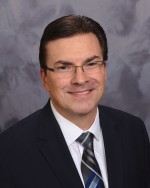I would like to yield my blog space to my good friend and colleague, Tom Lia, executive director of the Northern Illinois Fire Sprinkler Advisory Board (NIFSAB). His team produced an excellent press release on fire sprinkler effectiveness during a recent fire in a skilled nursing facility:
ORLAND PARK, Ill., Feb. 19, 2015 This morning, a single fire sprinkler controlled a mattress fire at Ballard Rehabilitation, a skilled nursing facility (SNF) at 9300 Ballard Road in Des Plaines, Ill., until North Maine Fire Protection District crews provided final extinguishment. The fire sprinkler system contained the fire to a single room on the second floor and prevented major damage and possible deaths, thereby validating a Centers for Medicare & Medicaid Services (CMS) decision to require fire sprinklers in all new and existing long term care facilities nationwide.
The CMS federal rule requiring fire sprinklers in long term care facilities became effective on Aug. 13, 2013, following a five-year phase-in time frame after publication in 2008. The rule, which applies to SNFs that are regulated by CMS for Medicare and Medicaid licensure, is a direct result of two deadly nursing home fires in 2003—one in Hartford, Conn., and the other in Nashville, Tenn.
“The success of the fire sprinkler controlling the fire should be a reminder to the state of Illinois to follow up on any remaining skilled nursing facilities that have deficiencies,” says Tom Lia, executive director of the nonprofit Northern Illinois Fire Sprinkler Advisory Board.
If cited for deficiencies, SNFs must submit a plan of correction and achieve fire sprinkler installation within three months. After the three-month period, the Social Security Act requires that any facility that is not in substantial compliance will be subject to a denial of payment of new admissions and termination from Medicare participation at the end of six months.
“Fortunately, the Ballard Rehabilitation facility was compliant with the federal rule and protected by a fire sprinkler system,” says Lia. “This successful fire sprinkler activation proves the value of the federal rule and the ability of quick-response fire sprinklers to save lives and property.”
Unfortunately, the effectiveness of fire sprinklers is not fully appreciated until ignition occurs. I would like to thank Tom Lia and other fire and life safety professionals around the country who continue to “beat the drum” every day promoting the importance of installed fire suppression systems in buildings of every type of occupancy classification. While it is purely speculation, the fire that Tom wrote about could easily have been a catastrophic event. Now, it will likely be written up as a health care success story in a future edition of the National Fire Protection Association (NFPA) Journal.
About NIFSAB
NIFSAB, http://www.firesprinklerassoc.org, is a nonprofit organization dedicated to promoting progressive legislation, raising public awareness, and educating code officials and governmental policy makers by demonstrating the proven performance of fire sprinklers in saving both lives and property.
Stan Szpytek is the president of Fire and Life Safety (FLS), and is the life safety/disaster planning consultant for the Arizona Health Care Association and California Association of Health Facilities. Szpytek is a former deputy fire chief and fire marshal with more than 35 years of experience in life safety compliance and emergency preparedness. FLS, www.EMAllianceusa.com, provides life safety and disaster planning consultative services to health care and senior living providers around the nation. He can be reached at Firemarshal10@aol.com.












